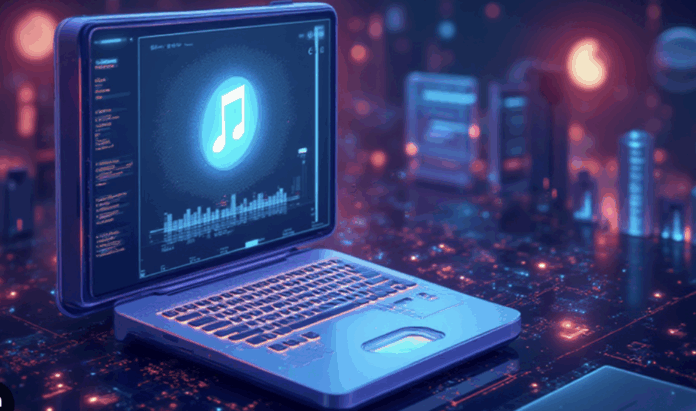In the fast-evolving world of artificial intelligence, creativity and computation are merging in ways once thought impossible. One of the most fascinating innovations to emerge from this convergence is text to music technology — a system that can transform written words into fully composed soundtracks, melodies, and even symphonies. As industries across the globe embrace AI-driven creativity, this innovation is redefining how we create, consume, and experience music.
What Is Text to Music Technology?
Text to music refers to the process of converting written text, prompts, or descriptions into musical compositions using artificial intelligence. Powered by large-scale neural networks and machine learning models, these systems analyze the emotional tone, rhythm, and context of text to generate melodies that reflect its meaning.
For example, typing a phrase like “a hopeful sunrise over calm waves” can produce a soothing, ambient composition with gentle piano chords and soft strings. On the other hand, a phrase like “a chaotic storm in a digital city” might generate an electronic, fast-paced soundtrack filled with energy.
This technology is built upon a similar foundation as text-to-image or text-to-video AI — it interprets the intent behind language and turns it into art. The difference here is that instead of pixels, the output is sound waves, structured as music.
How Does It Work?
AI music models are trained on massive datasets containing millions of songs across genres and eras. These models learn musical patterns — scales, tempos, harmonies, and emotional tones — the same way language models learn grammar and meaning. When given text, the AI interprets the sentiment and context, mapping linguistic elements (like “happy,” “dark,” “fast,” or “romantic”) to musical equivalents such as major or minor keys, tempo variations, and instrumentation.
Behind the scenes, deep learning algorithms such as transformers and diffusion models drive these systems. Tools like Mubert, Suno, Udio, and Meta’s MusicGen have made it possible for users to type a prompt and instantly generate unique compositions. Each platform interprets text slightly differently, but all share the same goal: making music creation as accessible as writing a sentence.
The Creative Revolution for Artists and Brands
What makes text to music technology so revolutionary is its accessibility. You no longer need to be a trained musician or own expensive recording equipment to create original soundtracks. Whether you’re a filmmaker needing custom background music, a marketer producing branded jingles, or a content creator seeking copyright-free sound, AI music generation opens the door to limitless creative possibilities.
For artists, this technology can serve as a creative partner. Many musicians now use AI to generate inspiration, chord progressions, or even backing tracks that they later refine manually. It’s a powerful blend of human emotion and machine precision.
For brands and businesses, text to music has marketing potential that’s hard to ignore. Custom sound branding — music that represents a company’s identity — can be generated on demand, matching a campaign’s tone, audience, and message. This personalization enhances user engagement and brand recall in ways that traditional stock music can’t.
Ethical and Artistic Challenges
Of course, innovation always brings challenges. Critics argue that AI-generated music could threaten human artistry, especially when models are trained on copyrighted works. There’s also the question of ownership — who truly “owns” the output of an AI composer? The user who typed the prompt, or the company that built the model?
Regulatory frameworks are still evolving to address these issues. Meanwhile, many platforms are developing ethical guidelines, using only royalty-free or licensed datasets. The focus is shifting from replacing artists to empowering them — providing tools that enhance creativity rather than diminish it.
The Future of Music Creation
The future of text to music is incredibly promising. Imagine video games that generate adaptive soundtracks based on gameplay mood, or fitness apps that create personalized workout music based on your energy level. Even mental health apps could generate calming soundscapes tailored to your emotional state.
In educational settings, AI-generated music could help teach musical concepts or inspire young learners to experiment with sound. Film and content creators will soon have an AI assistant capable of composing original scores in seconds, freeing up time and budget for other creative aspects.
The next generation of AI music tools will likely merge text, image, and sound generation into one seamless ecosystem. You might describe a full scene — “a sunset over London’s skyline with gentle jazz in the background” — and instantly receive both the image and the music to match it.
Final Thoughts
The era of text to music represents a milestone in creative technology. It’s more than a novelty — it’s a new artistic language where words and melodies intertwine. As AI continues to evolve, the ability to generate expressive, meaningful sound from simple text will become an essential tool for creators, educators, marketers, and dreamers alike.
The beauty of this technology lies not in replacing musicians, but in expanding what’s possible. When anyone can translate emotions into sound with a few keystrokes, creativity becomes universal — and music, once again, becomes the shared heartbeat of human imagination.


